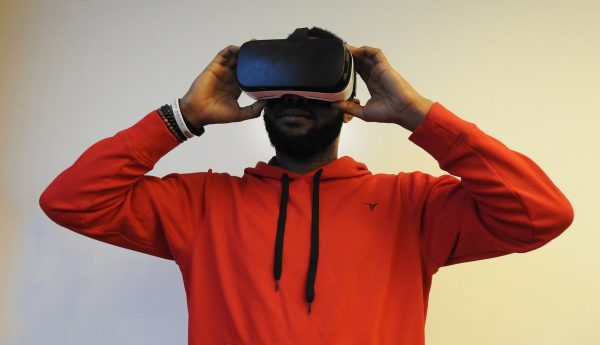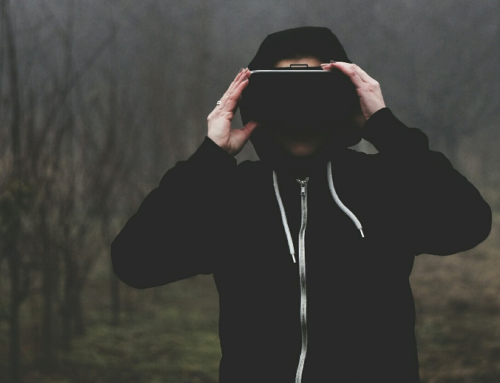Warum sich die Zeit der Samsung Gear VR dem Ende neigt.
Samsung hat angekündigt, dass es kein weiteres VR-Headset mit Smartphonebetrieb geben wird, was nicht allzu überraschend ist.

Die Meldung wird schon seit längerer Zeit erwartet. Samsung hat nicht mehr mit jedem Smartphone eine neue Gear VR herausgebracht und sie meistens mehr oder weniger verschenkt, sondern in letzter Zeit das Thema komplett vermieden. Unklare Aussagen darüber, wie das Unternehmen der Gear VR-Plattform „verpflichtet geblieben“ ist, klangen in den letzten beiden Verpflichtungen hohl an, und jetzt ist klar, dass das Galaxy Note 10 das Headset überhaupt nicht unterstützt.
Samsungs Experiment mit der Gear VR ist vorbei, aber alles in allem kann man von einem Erfolg sprechen.
Jeder möchte eine Gear VR, wenn Sie kostenlos zu haben ist.
Vor 5 Jahren sollte alles in VR sein. Analysten hatten es zur nächsten großen Sache gemacht, und jedes Technologieunternehmen versuchte herauszufinden, wie man in diesen Bereich einsteigen kann. Google brachte Cardboard heraus, Oculus hatte gerade einen enormen Hype durch eine erfolgreiche Kickstarter-Kampagne verursacht, und viele Personen sprachen bereits vom Durchbruch der VR.
Also musste Samsung natürlich mitmachen und wie es bei Samsung häufig der Fall ist, war die erste Version nicht sonderlich gelungen.
Veröffentlicht als Entwicklerkit mit dem Note 4, erhitzte die Gear VR so stark, dass ein aktiver Lüfter im Headset das Problem nicht lösen konnte. Dieses Problem konnte nicht völlig gelöst werden, als das System vollständig für die Öffentlichkeit freigegeben wurde, aber den meisten Leuten war es egal, weil sie nicht dafür bezahlt haben. Um sicherzustellen, dass viele Kunden sofort Zugang zur Plattform hatten, wurde die Gear VR meistens den Kunden beim Kauf eines High-End-Smartphones kostenlos mitgegeben. Millionen VR-Headsets wurden in die Welt verschickt, oft mit einem Kredit, um ein paar Spiele zu kaufen.
Diese Headsets waren nicht wirklich eine Samsung-Idee. Die Hard- und Software, die die Samsung Gear VR antreibt, wurde vollständig von Oculus betrieben. Als Sie die Gear VR-Software aufgerufen haben, war das Oculus-Logo überall zu sehen. Als Sie Apps im Gear VR-Ökosystem gekauft haben, hat Oculus das Payment Gateway gepflegt. Das Oculus-Logo war auf dem Headset, direkt neben dem vom Samsung, aber es war ziemlich klar, welches Unternehmen das System wirklich verwaltet hat.
Was Samsung anbot, war eine riesige Gruppe von Usern und den Zugriff auf ein weit verbreitetes Hardware-System. Es war für beide Unternehmen bequem zusammenzuarbeiten, und die beiden Unternehmen arbeiteten schnell, um das Kunststoffgehäuse zu verbessern, in dass das Smartphone einrasten würde, um es alles mit jeder Samsung Telefonfreigabe funktionieren zu lassen.
Für ein paar Jahre hat Samsung einen großartigen Job gemacht, so dass es so aussah, dass die Gear VR sehr beliebt ist. Berichte über 3,65 Mio. versendete Headsets von Samsung im Jahr 2017 erweckten den Eindruck, dass die VR-Headsets sehr beliebt sind. Es ist allerdings zu beachten, dass Samsung in aller Regel den Kunden dafür keinen Preis berechnet hat. Die Gear VR wurde eher als Zusatz verwendet, um die Kunden zum Kauf eines Samsung-Smartphones zu bringen.
Wie viele Personen haben aber die Gear VR auch dauerhaft genutzt? Laut Oculus hatten damals über eine Million Menschen die Gear VR mindestens einmal genutzt. Das war damals eine große Anzahl von Menschen, die diese innovative Technologie nutzten, aber es bedeutete auch, dass nur etwa ein Drittel der Besitzer sie regelmäßig verwendeten. Es gab von Oculus allerdings nie Aussagen darüber, wie lange oder wie oft diese Personen die Headsets genutzt haben.
Durch die starke Verbreitung von Samsung-Smartphones wurde die Gear VR zum meistverkauften VR-Headset auf der Welt. Zudem verbesserte sich in dieser Zeit die Software dramatisch. Oculus entwickelte sich vom Bau einer ungeschickten Plastikschale für VR-Videos und gelegentliche Spiele zu einem vollständigen Unterhaltungssystem, das von Ihrem Smartphone unterstützt wird. Spieleentwickler haben die Grenzen des Headsets mit einigen fantastisch einzigartigen Erlebnissen erweitert, und Live-Sportveanstaltungen in VR wurden dank der Popularität des Headsets zu einem echten Event. Auf seinem Höhepunkt war die Gear ein wirklich einzigartiges Erlebnis, das in der mobilen VR-Welt seinesgleichen sucht. Maßgeblich dafür war auch die nahezu wöchentliche Veröffentlichung von neuen Spielen und Videos.
Für einen kurzen Moment wuchs die wahrgenommene Popularität des Headsets über Samsung hinaus. Sechs Flagschiffe und andere Bereiche nutzten die Gear VR, um virtuelle Achterbahn-Erlebnisse zu schaffen. Kunstausstellungen begannen, das Headset zu verwenden, um alternative Blickwinkel anzubieten. Samsung und mehrere andere Unternehmen haben mehrere 360 Grad Kameras veröffentlicht, um den Menschen eine Möglichkeit zu bieten, schnell eigene Inhalte für die Plattform zu erstellen. Mitte 2017 schien es wirklich so, als wäre die Gear VR ein großer Erfolg, dass die Leute mit großer Freude nutzten und auch bereit wären, dafür einen angemessenen Preis zu zahlen.
Und dann plötzlich hörte alles auf. Beim Note 10 kündigte Samsung bereits an, dass dieses Gerät keine Gear VR unterstützen werde. Selbst wenn Sie bereits das Headset haben, wird das Einsetzen des neuen Smartphones nichts bewirken.
Das Ende der Samsung Gear VR.
Als Samsung bei Ankündigungen gar nicht mehr über Gear VR sprach, war klar, dass etwas nicht stimmte. Eine direkte Aussage, dass die Samsung Gear VR eingestellt wird, wurde bisher noch nicht gemacht. Die gesamte Situation deutet auf ein Problem bezüglich der Gear VR hin.
Dieses Problem, so stellt sich heraus, war die Entscheidung von Oculus, mit seinem eigenen Projekt fortzufahren. Ende 2018 präsentierte Oculus sein erstes eigenständiges VR-Headset, das Oculus Go. Dieses Headset hatte die Teile des Smartphones in das Headset integriert, so dass keine Notwendigkeit mehr für ein Smartphone bestand. Zudem versprach Oculus den Zugang zu den gleichen Anwendungen und Spielen wie bei der Gear VR. Damals ließ Oculus es so aussehen, als wäre Oculus Go nicht dazu da, die Gear VR zu ersetzen, welche für Oculus jeweils als wichtig angesehen wurde. Dieses Vorgehen machte aus Sicht von Oculus mit Sicherheit Sinn, da viele Menschen aktiv auf dieser Plattform kauften.
Wenn Sie einen Blick auf die Demos der Galaxy Note 10 werfen, ist klar, dass Samsung jetzt glaubt, dass die Fokussierung von Augmented Reality der richtige Weg ist.
Aber die Realität ist, dass Oculus mit Oculus Go deutlich mehr erreichen konnte, als es mit der Gear VR jemals möglich war. Durch die Verwendung eines vollständigen Samsung-Smartphones musste Oculus durch das Durcheinander bestehender Hintergrundanwendungen navigieren, die alle wertvolle Systemressourcen beanspruchen und den Akku verbrauchen. Als dediziertes Hard- und Software-Setup konnte die Oculus Go nicht nur mehr aus Computer-Perspektive leisten, sondern auch ein reichhaltigeres visuelles Erlebnis bei höheren Frameraten bieten. Obwohl das Oculus Go auf dem Papier deutlich weniger leistungsstark war als das Samsung Galaxy S8, übertraf es das smartphonebasierte VR-Headset in jeder Hinsicht.
Nachdem Oculus Go veröffentlicht wurde, hörten wir immer weniger bezüglich eines Supports der Gear VR. Beide Unternehmen machten bezüglich einer neuen Gear VR keine Angaben, so dass es beim Samsung Galaxy S10 nicht sonderlich überrascht hat, dass die Gear VR an keiner Stelle erwähnt wurde. Da es beim Note 10 offiziell keinen Gear VR-Support geben wird, kann man davon ausgehen, dass Samsung keine weiteren Gear VRs mehr auf den Markt bringen wird.
Samsungs VR-Ansprüche, sowohl für die Gear VR als auch für die fast ebenso inaktiven Windows Mixed Reality Plattformen, sind vorerst erfüllt. In beiden Situationen war Samsung nur der Hardwarepartner und nicht wirklich an den Teilen des Ökosystems beteiligt, die am Ende das meiste Geld verdient haben. Von daher ist aus der Ferne nicht gleich ersichtlich, ob Samsung in der Lage ist, es erfolgreich abzuschließen.
Im Moment macht der Headset-Hersteller also weiter. Wenn Sie einen Blick auf die Demos der Galaxy Note 10 werfen, wird Ihnen schnell klar, dass Samsung in Zukunft mehr das Thema Augmented Reality fokussieren wird. Es ist ein weiteres Popkultur-Ereignis, von dem Analysten sagen, dass es sehr beliebt sein wird. Samsung hat seinen eigenen Plan und dies alles ist nur eine Momentaufnahme.
Aber im Gegensatz zur Gear VR, welches von einem Unternehmen mit Ambitionen angetrieben wurde, die Grenzen zu überschreiten und etwas Neues zu entdecken, wird Samsung diese neue Welle nur bis zur nächsten Stufe begleiten.
Vielen Dank für Ihren Besuch.


